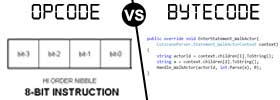Difference between High Blood Pressure and Low Blood Pressure
Key Difference: High Blood Pressure and Low Blood Pressure are two different conditions that occur when the blood pressure is not at normal acceptable terms. As the names suggest, high blood pressure is when the blood pressure is regularly too high, while low blood pressure is when the blood pressure is regularly too low. Both conditions have their own sets of risks, symptoms, and treatments.
 Blood Pressure basically refers to the pressure of the blood in the bloodstream, what that basically means is that the pressure the blood exerts against the walls of the artery or vein. Blood pressure measurement is twofold: systolic pressure and diastolic pressure. Systolic pressure is the pressure in the arteries when the heart beats and fills them with blood. Diastolic pressure is the pressure in the arteries when the heart rests between beats. This pressure is measured by a blood pressure cuff, which is officially called a sphygmomanometer.
Blood Pressure basically refers to the pressure of the blood in the bloodstream, what that basically means is that the pressure the blood exerts against the walls of the artery or vein. Blood pressure measurement is twofold: systolic pressure and diastolic pressure. Systolic pressure is the pressure in the arteries when the heart beats and fills them with blood. Diastolic pressure is the pressure in the arteries when the heart rests between beats. This pressure is measured by a blood pressure cuff, which is officially called a sphygmomanometer.
High Blood Pressure and Low Blood Pressure are two different conditions that occur when the blood pressure is not at normal acceptable terms. As the names suggest, high blood pressure is when the blood pressure is regularly too high, while low blood pressure is when the blood pressure is regularly too low. Both conditions have their own sets of risks, symptoms, and treatments.
Average blood pressure is considered to be 120/80 mm Hg as calculated on the sphygmomanometer. However, if the blood pressure is constantly over 140/90 mm Hg, then the doctor may consider it as hypertension, i.e. high blood sugar. On the other hand, if the blood sugar is commonly below 0/60 mm Hg or less, then it just may be hypotension, i.e. low blood sugar. Both conditions are dangerous in their own right.
High blood pressure increases the risk of a heart disease, a stroke, kidney disease and dementia. Constant high pressure weakens the blood vessels and thus may lead to narrow blood vessels and clots. In rare cases, really high blood pressure may even cause the blood vessels to burst or commonly heart failure.
People who smoke, don’t exercise often, don’t eat healthy, or ingest too much salt, are often at a higher risk of developing high blood pressure. Also, if there is a family history of high blood pressure, or if a person is of African-Caribbean or South Asian Descent then they may also be at a high risk for high blood pressure. Having diabetes, kidney disease, or high cholesterol also increases the risk of high blood pressure.
 It is very difficult to gauge whether one may be suffering from high blood pressure as it usually does not present any symptoms. The only way to diagnose high blood pressure is via frequent checkups. This is why blood pressure is often referred to as the silent killer. Treatment of high blood pressure includes a healthy lifestyle, low sodium intake, regular exercise, and medication if the doctor deems it necessary.
It is very difficult to gauge whether one may be suffering from high blood pressure as it usually does not present any symptoms. The only way to diagnose high blood pressure is via frequent checkups. This is why blood pressure is often referred to as the silent killer. Treatment of high blood pressure includes a healthy lifestyle, low sodium intake, regular exercise, and medication if the doctor deems it necessary.
Yet, low pressure is not good either, it can lead to reduced blood flow to the heart, brain, and other vital organs, and thus possibly leading to organ damage. If the blood pressure is only slightly low then it is not a problem, but if the pressure drops to being too low, it can irreparable damage the heart and brain, as the blood would not be able to regulate enough information.
The most common symptom of low blood pressure is dizziness or lightheadedness, fainting, blurred vision, nausea, rapid breathing, or fatigue. Low blood pressure is usually a symptom of another disease or has another underlying cause, such as diabetes, anemia, arrhythmia, heat exhaustion or heat stroke, liver disease, severe infections, severe allergic reactions, lack of vitamins B-12 and folate or Parkinson's disease.
The treatment of low blood pressure usually involves treating the underlying cause of it. It may also include ingesting more salt, drinking more water, wearing compression stockings, and/or taking medications if necessary.
Comparison between High Blood Pressure and Low Blood Pressure:
|
|
High Blood Pressure |
Low Blood Pressure |
|
Description |
High Blood Pressure is a medical condition when the blood exerts more than the acceptable amount of pressure against the blood vessels. |
Low Blood Pressure is a medical pressure when the amount of pressure that blood exerts against the blood vessels is too low. |
|
Medical Name |
Hypertension |
Hypotension |
|
|
140/90 mm Hg or more |
0/60 mm Hg or less |
|
Risks |
May increase the risk of stroke, dementia, kidney damage, heart failure, eye problems, or stroke. |
Leads to reduced blood flow to the heart, brain, and other vital organs. |
|
Causes |
|
|
|
Symptoms |
No outward symptoms or signs, just regular high blood pressure readings. If the blood pressure is very high, then the following symptoms may appear:
|
No consistent outward symptoms or signs. Can cause symptoms in very extreme cases, such as:
|
|
Diagnosis |
Consistent high blood pressure reading on the blood pressure cuff, officially called the sphygmomanometer. |
Consistent high blood pressure readings. Blood tests, Electrocardiogram (ECG), Echocardiogram, Stress test, Valsalva maneuver, and a Tilt table test may be given to find the underlying cause of the low blood pressure. |
|
Treatment |
|
Low blood pressure that either doesn't cause signs or symptoms or causes only mild symptoms will probably now require treatment. If treatment is required, it will probably depend on the underlying cause for the low blood pressure. Some other things that can be done to raise blood pressure:
|
Reference: Blood Pressure UK, WebMD, and Mayo Clinic Image Courtesy: drfuhrman.com, emed.com.au









Add new comment